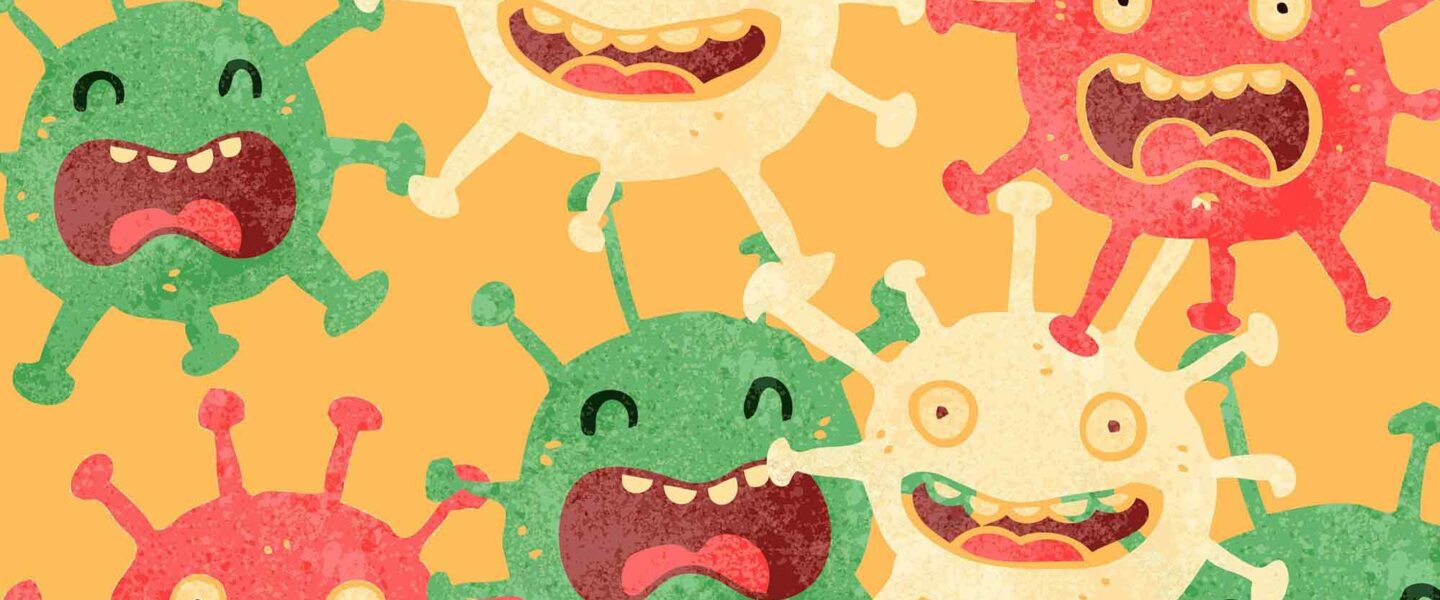Saturday Hashtag: #CovidStacking
The Myth of Post-Pandemic Normalcy
Welcome to Saturday Hashtag, a weekly place for broader context.
|
Listen To This Story
|
More than one person (1.1) could die from COVID-19 every three minutes throughout 2025; extrapolating data from Boston University and Metaculus, total COVID-19 deaths could range between 85,300 and 192,700. But this isn’t the bad news.
Despite what many believe, COVID-19 continues to spread and mutate across the nation. Yet, our society has largely abandoned all the basic precautions we once relied upon — no testing, no isolation, no masks — and instead replaced these measures with apathy and magical thinking.
Research from the People’s Medicine Project shows that while infection peaks have softened, infection rates between those highs have essentially doubled and remain elevated, with reinfections occurring more frequently.

This means more people are getting infected with greater frequency. This constant pool of reinfections is far higher than it was during the Spanish flu or the Black Death.
According to the World Health Organization, as of August 2024, COVID-19 has already resulted in 776 million infections globally, leading to over 7 million deaths — a fatality rate of just under 1 percent.
COVID-19’s relatively low mortality rate may have caused us to ignore its most significant impact: the cumulative damage of repeated infections and the long-term economic consequences of a health impaired workforce.
Cumulative Damage
Although the COVID-19 mortality rate remains below 1 percent, its long-term effects are undeniable and significant.
Each reinfection inflicts cumulative damage on the body, much like repeated concussions in football, which gradually accumulate to cause irreversible neurological harm.
Initially, the effects may be subtle, but they build up over time, leading to devastating consequences. With every new infection, the body faces an increased risk of severe, long-term damage.
Reinfection Sickness
Every COVID-19 reinfection increases the risk of long COVID and causes measurable compounded damage to the body including:
- Brain damage: To emotional regulation, memory, executive functioning, and critical thinking systems.
- Heart damage: Hypertension, arrhythmias, myocarditis, heart failure, cardiac arrest, thrombotic disorders, and cardiogenic shock, including in children.
- Immune system damage: Weakening cell structure, increased cellular aging.
- Salivary gland damage: Diminishing immune defense.
- Liver damage: COVID-19 is linked to mysterious hepatitis in children, now known as “long COVID liver.”
- Neurological issues: Guillain-Barré syndrome, anosmia, stroke, encephalopathy/encephalitis, neuropathy, visual impairments, neuralgia, cranial nerves palsy, and seizures.
- Digestive Issues: acute pancreatitis, irritable bowel syndrome, acid reflux, and ulcers.
This ongoing immunity damage — and systemic weakening — also increases vulnerability to other diseases, such as invasive strep, which can persist for up to a year after reinfection.
This cumulative impact means that more people overall have worse baseline health and lower quality of life.
The Cognitive Cost
The virus profoundly alters the human brain, damaging its ability to regulate emotions, process memories, and perform critical thinking tasks.
This neurological damage is contributing to a decline in empathy, weakened critical thinking, and rising societal apathy.
It may also be a significant factor in the increasing susceptibility to propaganda and manipulation.
Many people now feel “different” from how they once were. This is not merely anecdotal; it’s a tangible consequence of COVID-related brain trauma.
The effects of this damage could help explain the alarming rise in hate crimes, as well as the increase in car accidents and other societal breakdowns.
History has shown similar cognitive declines following major pandemics and wars.
Children Bear The Brunt
Children are facing some of the most severe consequences of COVID-19, as infections are widespread in schools, primarily due to inadequate safety measures.
The impact of repeated reinfections in young developing bodies is profound. Research indicates that multiple COVID-19 reinfections in children can lead to developmental delays, chronic health issues, as well as increased COVID-related absences.
These health effects are likely to extend into adulthood, adding to the long-term burden on their overall well-being.
The Hidden Economic Crisis
Long COVID is far more widespread than we often realize. Over 35 million US adults are affected, with 1 in 7 working-age adults suffering, leading to hundreds of billions of dollars in lost wages.
The pandemic has also deepened existing racial and economic disparities, hitting marginalized and front-line workers hardest and exacerbating social inequalities.
The Leadership Gap
Government and policy failures continue to undermine public health efforts. Social media misinformation and the persisting leadership vacuum are further exacerbating the situation. Vaccine approvals, such as for Novavax, are being delayed for nonscientific reasons, contributing to the confusion and hesitation surrounding vaccines.
Proven Protection
The available low-risk vaccines don’t completely prevent COVID-19 or long COVID, but they do significantly reduce the chance of severe outcomes.
A layered approach works best, combining vaccination, testing, isolating, masking, and air filtration. Tools like HEPA filters, which reduce airborne COVID-19 by 98 percent, should be prioritized in schools, hospitals, and public transport to reduce transmission.
Denial Is Damaging
COVID-19 is not over. It is still profoundly affecting individuals and society. The notion that we are in a post-pandemic normal is a dangerous illusion. Covid-19 stacking — the compounding of multiple infections — is real, deflection and inaction are only making things worse.
The best path forward is one rooted in reality: acknowledging the ongoing threat of COVID-19, using evidence-based precautions, and protecting one another, especially the most vulnerable members of society.
Reducing the Risk of Long COVID in Kids: Why Reinfection Matters and What We Can Do
The author writes, “For parents who are sick and tired of hearing about COVID-19, learning about a link between repeated infections and long-term symptoms might be frustrating. But there are things everyone can do to reduce the risk of reinfection.”
COVID-19 in 2025: ‘A Constant Threat, but a Manageable One’
From the Boston University School of Public Health: “As we enter the sixth year of life with COVID-19, SPH faculty members Davidson Hamer, Laura White, Jonathan Levy, Patricia Fabian, Brooke Nichols, Matt Motta, Timothy Callaghan, and Jennifer Weuve discuss how they expect the virus to evolve, and how we can apply lessons learned to mitigate future suffering from COVID-19 and other infectious disease threats.”
5 Ways the Pandemic Changed Us for Good, for Bad and Forever
The author writes, “As we mark five years on from the start of the coronavirus pandemic this month, life has changed for many people, in ways both mundane and profound. … Here are five more examples of lessons we have learned and things COVID changed permanently, though it is not an exhaustive list.”
What You Need to Know About COVID-19 in 2025
From GNR Public Health: “According to the CDC, each year, respiratory viruses like COVID-19 are responsible for millions of illnesses and thousands of hospitalizations and deaths in the United States. The good news is there are actions you can take to help protect yourself and others from health risks caused by respiratory viruses.”
The Mystery of Why COVID-19 Seems to be Becoming Milder
The author writes, “Some indications suggest that Covid in 2025 is a milder disease. The once common symptoms of loss of taste and smell are becoming less common. And though some people are being hospitalized and dying, Chin-Hong says the vast majority of people will either be asymptomatic or experience a cold so mild that some might well mistake it for a seasonal allergy, such as a pollen complaint.”
Experts Say the ‘New Normal’ in 2025 Will Be Far More Tech-Driven, Presenting More Big Challenges
From Pew Research Center: “A plurality of experts think sweeping societal change will make life worse for most people as greater inequality, rising authoritarianism and rampant misinformation take hold in the wake of the COVID-19 outbreak. Still, a portion believe life will be better in a ‘tele-everything’ world where workplaces, health care and social activity improve.”
The Next Pandemic: COVID-19 Showed Us How We Can Fight the Next Global Outbreak
From the UC Davis Health: “It’s been five years since COVID-19 made its appearance, shaking the world. Since then, things have gotten better, with new vaccines, therapies and a greater understanding of how the virus is spread. While COVID is still with us, we now regard it as a manageable disease. But as the current avian flu outbreak reminds us, the risk for a new pandemic is always present. UC Davis Health Chief of Infectious Diseases Stuart Cohen shares what lessons COVID has taught us that will help us better respond next time.”




